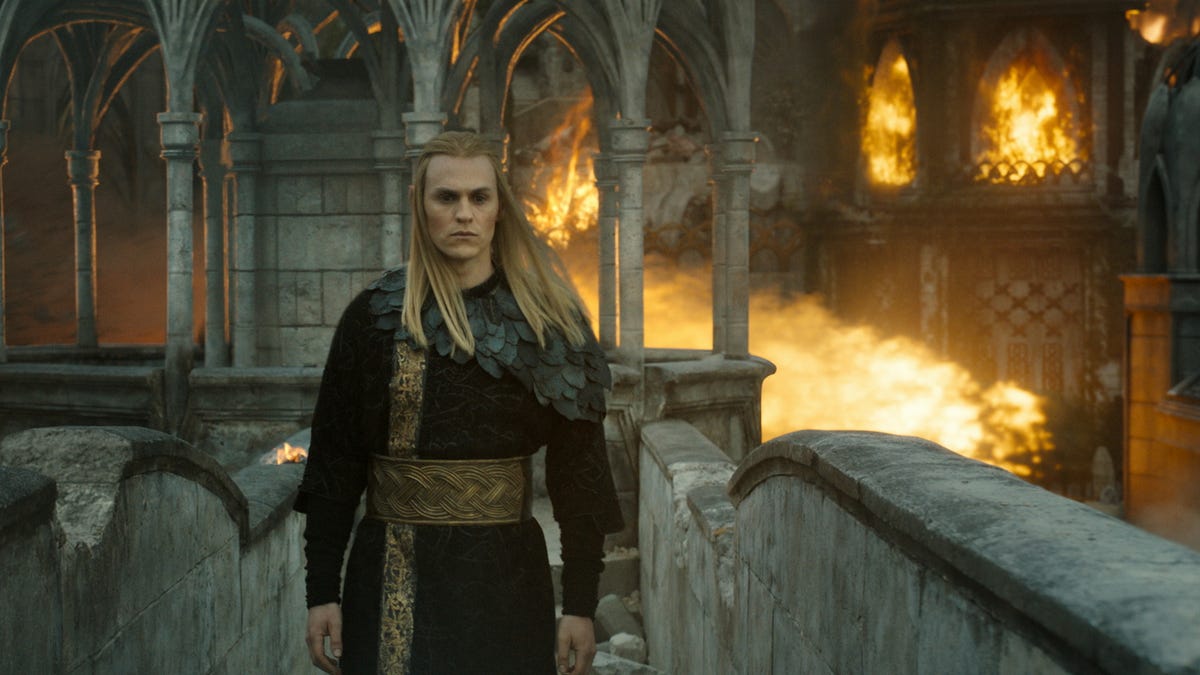‘The Rings of Power’ Season 2: Stunning Yet Hollow
There’s a void where my affection for “The Lord of the Rings: The Rings of Power” used to be.
Season 1 of the lavishly produced Amazon Prime series had many strengths. The sets, costumes, and visual effects are stunning, showcasing the significant effort involved in bringing this show to life.
The narrative was also poised to explore diverse avenues, drawing solely from a limited selection of J.R.R. Tolkien’s writings in the “Lord of the Rings” appendices to unfold the saga of the Second Age of Middle-earth, which occurs after the creation myth and before the main “LOTR” storyline. It focuses on the creation of the rings, the emergence of the ultimate antagonist Sauron, and the establishment of the narrative setup for Frodo’s quest to destroy the ring of power in the trilogy.
The first season certainly had a lot of groundwork to lay, and I was willing to give creators J.D. Payne and Patrick McKay the benefit of the doubt as they sought to distinguish their series from the iconic Peter Jackson films. By the season’s conclusion, with the thrilling revelation that Sauron (Charlie Vickers) had been among them all along, my anticipation for a second season was high.
Regrettably, that initial excitement has been completely squandered in the bewildering, aimless, and emotionally lacking second season of “Rings of Power” (streaming Thursdays, ★½ out of four). While Season 1 felt like a leisurely exploration of Middle-earth, Season 2 bolts ahead, leaving behind crucial details and character arcs.
If you can recall what transpired in the first season − and I must admit I still felt somewhat unclear even after watching a recap video, which should not be necessary for viewers − you’ll discover that dark times are upon Middle-earth. Sauron deceived the elves, including Galadriel (Morfydd Clark) and Elrond (Robert Aramayo), into forging three rings of power to salvage their weakened realm of Lindon. The once idyllic kingdom of men, Númenor, suffers from the loss of its king and a battle in Middle-earth. Meanwhile, a few Harfoots, who resemble Hobbits, accompany a mysterious figure called “The Stranger” (Daniel Weyman) on a dangerous journey. Additionally, the dwarven realm of Khazad-dûm is on the brink of collapse and may also need some powerful rings.
This intricate web can be hard to remember, and the new episodes spend much of their time focused on overarching plot developments and mythology while neglecting character depth. The absence of strong protagonists leaves the narrative lacking a solid foundation amidst its many subplots. While the producers seem to rely on frightening monsters and villains to engage the audience, they fail to present relatable characters. The weight of the story relies heavily on the young cast, particularly Aramayo and Clark, who lack the skill or depth to infuse their roles with meaning.
The narrative unfolds in a mechanical manner, blurring relationships and making it difficult to understand who is who and their motivations. This poses a significant issue because, even with the most breathtaking visuals and audacious plots, the heart of any story is its characters. Viewers are drawn to individuals, regardless of whether they are clad in dwarven armor or Harfoot garb. When dwarf prince Durin IV (Owain Arthur) has a dispute with his father, Durin III (Peter Mullan), it becomes hard to care about their conflict, especially since the writers offer no reminders about the storyline from Season 1.
It’s disheartening to witness a narrative bursting with potential, supported by a dedicated production team and built upon cherished source material, unraveling as “Rings of Power” has. It’s evident that no production, regardless of its budget, is immune to failure in Hollywood.
If only I could wield a ring of power to refine this interpretation of Middle-earth.

